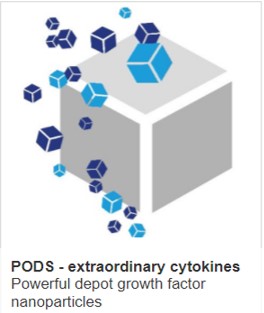How many more immune cells remain to be identified?

How Many Immune Cell Types Remain to Be Discovered?
The immune system is astonishingly complex. Over the past few decades, advances in technologies such as flow cytometry, mass cytometry, single-cell RNA sequencing, and spatial transcriptomics have progressively peeled back layers of cell heterogeneity that were invisible to older methods. As we uncover ever more subtypes of immune cells, it prompts a tantalizing question: how many immune cell types still remain to be discovered?
What counts as an “immune cell type”?
First, it helps to clarify what we mean by an “immune cell type.” In immunology, cell types are often defined by a combination of lineage (myeloid, lymphoid, etc.), surface marker expression, gene expression program, function, and sometimes location. But the line between a “type,” a “subtype,” or a “cell state” is blurry. New methods increasingly reveal that many classical immune cell populations are actually mosaics of distinct transcriptional and functional states.
Thus, the question is not “are there unknown broad lineages?” but “how many distinct, stable, functionally meaningful immune subtypes remain hidden?”
How many types we already know
At present, immunology textbooks list a few dozen canonical types: neutrophils, eosinophils, basophils, monocytes/macrophages, dendritic cells, natural killer (NK) cells, various T cell subsets (helper, cytotoxic, regulatory, etc.), B cells, innate lymphoid cells (ILCs), and so on. The Human Protein Atlas, for instance, defines ~18 immune cell types in its transcriptomic atlas.
But real-world research is already pushing beyond those boundaries. For example:
-
Single-cell transcriptomic profiling of tumors and healthy tissues has uncovered novel dendritic cell subtypes such as CLEC9A+ DCs.
-
A recent study at City of Hope identified a new type of ILC2 (innate lymphoid cell) with direct tumor-killing capability.
-
Dartmouth researchers found previously hidden diversity among macrophages (long thought to be a relatively “uniform” myeloid lineage).
-
Thymic mimetic cells, arising from medullary thymic epithelial cells, show phenotypes mimicking peripheral lineages—these are still being unraveled.
The broader Human Cell Atlas project (which aims to map all human cell types across tissues) currently defines over 500 distinct cell types across ~30 tissues. Some of those are immune cells or immune-related, but many belong to nonimmune tissues.
These observations suggest that the 20–30 “textbook” immune cell types might only scratch the surface.
Why there are probably many left to find
There are several reasons to believe that many immune cell types or states remain undiscovered:
-
Rare or tissue-specific populations. Some immune cells may exist only in particular tissues, or at very low abundance, escaping detection in blood-based or bulk-tissue studies.
-
Transitional states and plasticity. Many immune cells exhibit plasticity (for example, monocyte → macrophage, or changes under inflammation). Some intermediate or transitional phenotypes may not yet be catalogued.
-
Context-dependent activation states. Cells respond to infections, injury, or tumors; those activated states may diverge into distinct phenotypes that are functionally important yet rare in healthy tissue.
-
Evolutionary novelty. Evolution might have produced specialized immune cells for particular pathogens, environmental pressures, or tissue microenvironments—cells that we have not sampled or looked for.
-
Detection limitations. Earlier methods averaged signals across many cells, obscuring subtle heterogeneity. Modern single-cell and spatial methods are only now coming into their own.
An example of the evolutionary and modular capacity of the immune system: a recent study on genetic interactions among immune cells suggested that mutations affecting one cell type can influence others (a “cyto-trans” effect), which may facilitate the emergence of new phenotypes.
How many more?
Maybe hundreds. Because of the definitional fuzziness and technical challenges, it's impossible to state a precise number. But a plausible estimate is that dozens to perhaps a few hundred more immune subtypes remain undiscovered.
Some supporting hints:
-
If the Human Cell Atlas ultimately catalogs hundreds of immune-related cell types across tissues, that suggests a large space remains to fill.
-
Immunologists often discover a few new subtypes when applying single-cell methods to a given tissue or disease context.
-
Some scholars have speculated that the “true” number of human cell types (across all tissues) could extend into the low thousands.
-
If immune cells represent even 5–10% of that universe, hundreds of immune subtypes remain to be described.
However, not all will be “brand new” lineages—many will refine or subdivide existing categories.
How will this be important?
Discovering new immune cell types is more than taxonomy. Each new subtype may hold clues to:
-
How immunity is regulated in health and disease
-
Why some people respond differently to infections, vaccines, or immunotherapies
-
Novel therapeutic targets (e.g. a subtype uniquely active in tumors or autoimmune disease)
-
Better biomarkers to track disease states or treatment response
We don’t yet know exactly how many immune cell types remain to be discovered — but the evidence overwhelmingly indicates that many lurk beneath the surface. With newer tools now available, the next decade promises a burst of discoveries that will expand and refine our map of the immune system—and lead to deeper insights into health and disease.
IMAGE: A timeline of immune cell discovery CREDIT: CellGS
Learn more about powerful technologies that are enabling research:



